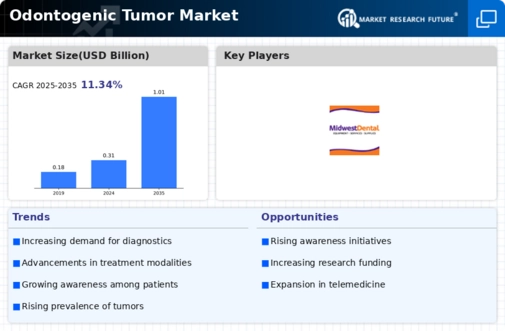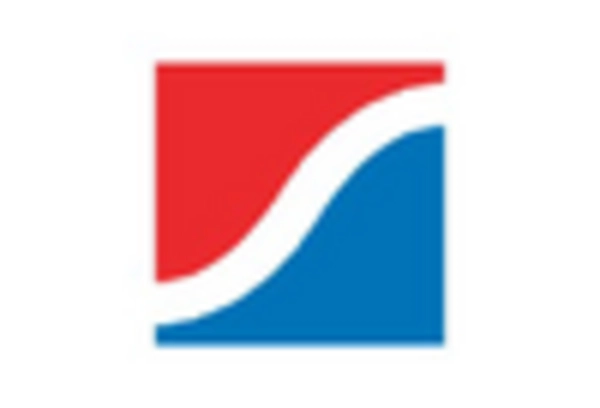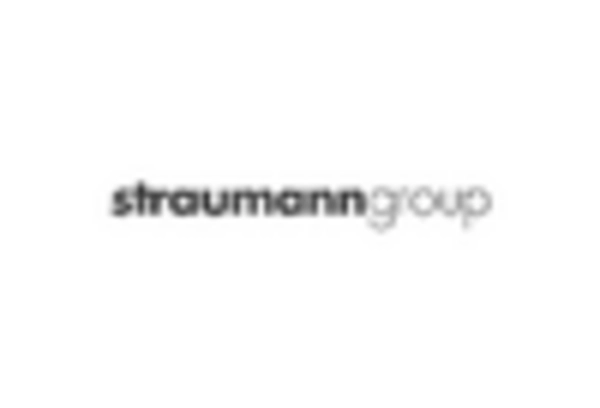Market Growth Projections
The Global Odontogenic Tumor Market Industry is projected to experience substantial growth over the next decade. With a market value of 0.31 USD Billion in 2024, it is anticipated to reach 1.01 USD Billion by 2035. This growth trajectory suggests a compound annual growth rate of 11.34% from 2025 to 2035. Such projections highlight the increasing demand for diagnostic and therapeutic solutions in the management of odontogenic tumors. Factors contributing to this growth include advancements in technology, rising awareness, and improved treatment options, all of which are likely to shape the future landscape of the market.
Improved Treatment Modalities
The development of improved treatment modalities is a significant factor propelling the Global Odontogenic Tumor Market Industry. Advances in surgical techniques, radiation therapy, and targeted therapies have enhanced the management of odontogenic tumors. For example, minimally invasive surgical approaches have reduced recovery times and improved patient outcomes. Furthermore, the introduction of novel pharmacological agents offers new avenues for treatment. As these modalities become more widely adopted, the market is poised for growth, with projections indicating a potential market size of 1.01 USD Billion by 2035, reflecting the increasing demand for effective treatment options.
Regulatory Support and Funding
Regulatory support and funding for research and development in the field of odontogenic tumors are crucial for the Global Odontogenic Tumor Market Industry. Government initiatives aimed at promoting research into rare tumors, including odontogenic tumors, provide financial backing and resources for innovation. For instance, grants and funding from health departments encourage studies that explore new treatment options and diagnostic methods. This support not only fosters advancements in the field but also enhances the overall market landscape. As funding continues to grow, the market is likely to benefit from increased research activities and improved patient care.
Rising Awareness and Education
The growing awareness and education regarding odontogenic tumors among healthcare professionals and the general public are pivotal for the Global Odontogenic Tumor Market Industry. Educational initiatives and campaigns aimed at improving knowledge about these tumors lead to earlier diagnosis and treatment. For instance, dental associations are increasingly incorporating odontogenic tumor education into their training programs. This heightened awareness is likely to result in increased patient referrals for diagnosis and treatment, thereby driving market growth. As the understanding of these tumors expands, the market could experience a compound annual growth rate of 11.34% from 2025 to 2035.
Advancements in Diagnostic Techniques
Technological advancements in diagnostic techniques are significantly influencing the Global Odontogenic Tumor Market Industry. Innovations such as digital imaging, 3D imaging, and molecular diagnostics enhance the accuracy of tumor detection and characterization. These advancements not only facilitate early diagnosis but also improve treatment outcomes. For example, the integration of artificial intelligence in radiographic analysis has shown promise in identifying odontogenic tumors more effectively. As these technologies become more accessible, the market is expected to grow, potentially reaching a valuation of 1.01 USD Billion by 2035, driven by increased demand for precise diagnostic tools.
Increasing Incidence of Odontogenic Tumors
The rising incidence of odontogenic tumors globally is a primary driver for the Global Odontogenic Tumor Market Industry. Factors such as genetic predisposition and environmental influences contribute to this increase. For instance, studies indicate that odontogenic tumors account for approximately 10% of all jaw tumors, with a notable prevalence in certain populations. This growing incidence is expected to propel market growth, with projections estimating the market value to reach 0.31 USD Billion in 2024. As awareness of these tumors increases, the demand for diagnostic and therapeutic options is likely to rise, further stimulating market expansion.

















Leave a Comment